
Visiting some amazing points of interest of north-west Scotland in an epic road-trip.
The plan was ambitious: visit isles of Orkney, Lewis and Harris, and Skye, plus some cool sites in between in just four days. Map-wise, something like this:

Right, let's crack on! After renting a car, my friend and I took off Dundee and joined the A9. It had some traffic jams here and there, but it went all right. Before reaching Inverness, which was the starting and ending point of our northwestern loop, we made a few stops along the way.
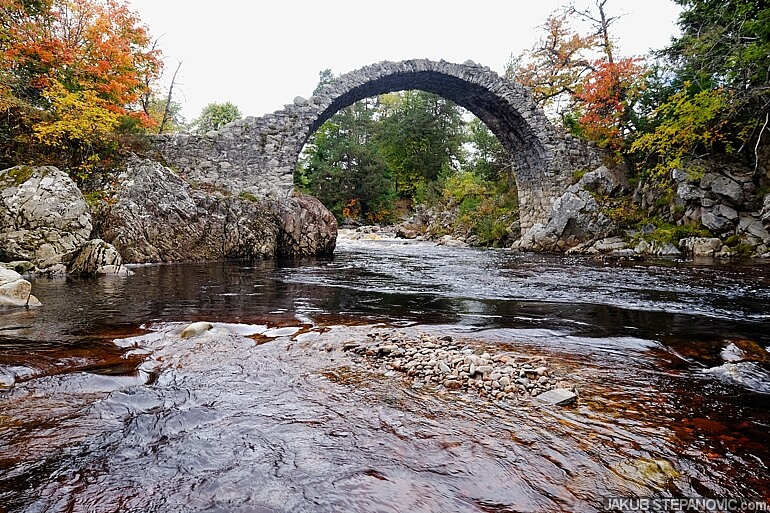
Carrbridge, more than 300 years old stone link across the river of Dulnain.
In Inverness, we crossed the Kessock Bridge — This was exciting, as it took us into a part of Scotland we had never been before. The next item on the itinerary was the Noss Head, a peninsula topped with a lighthouse, which proved to be pretty neat.
However, there's another structure next to the lighthouse that was our goal:
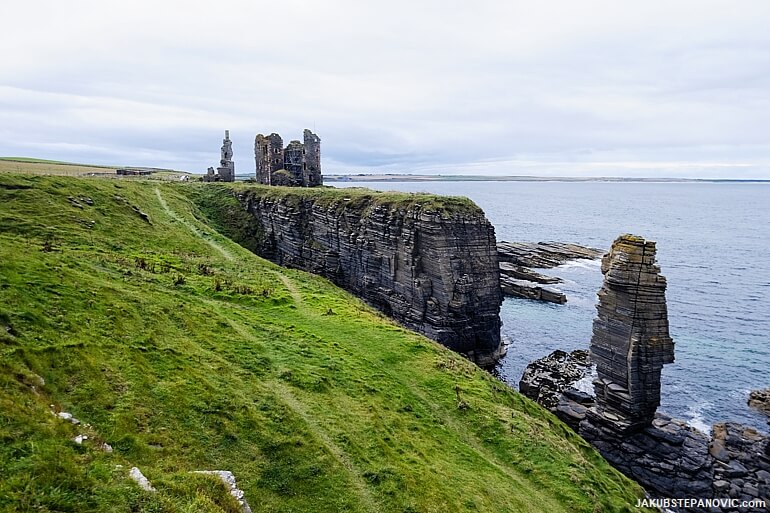
Girnigoe Castle
The issue was, we were slightly behind schedule. When we got to the castle's parking, the GPS showed that we need to leave immediately to catch our ferry to the Orkney. There's only one connection in the evening, and missing it would mess up the whole trip's plan.
But since the castle was super interesting, we couldn't resist and went to check it out up close anyway. So it happened, once back in the car, we had to race the clock and gain each of those minutes back. Thankfully, the road was empty, and so I could squeeze all the power that little car had onto the asphalt. And it paid off!
We arrived in the harbour at 6:13, two minutes before they closed the check-in to the ferry. Sure enough, we were already boarding at 6:18, and by 18:26, we departed onto the sea.
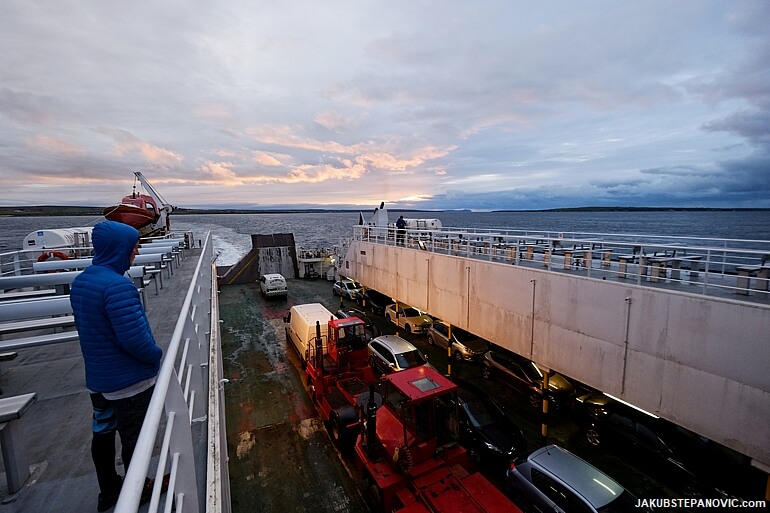
From the water, we had a nice view of the sunset, and Duncansby Head, the most northeasterly point of the Scottish mainland. Exhilaration, yey!
When we went further away from the shore, sea waves triggered alarms of fancy Audis and Mercedes on board while the view was getting better and better.
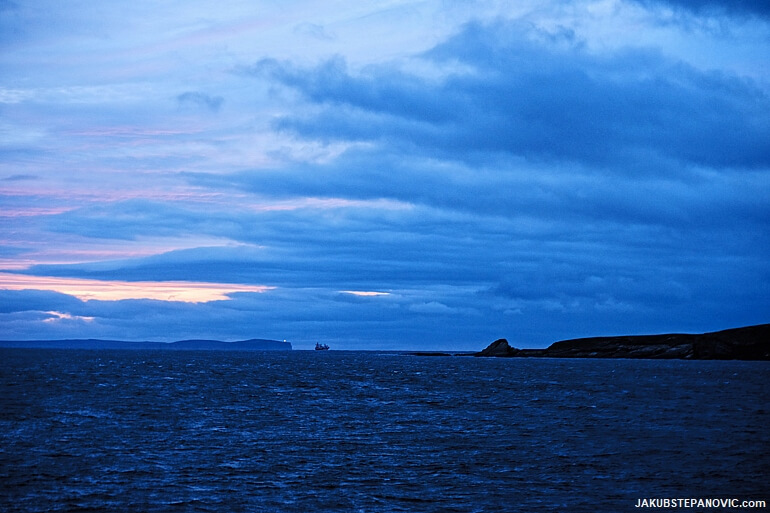
We landed at Orkney's shore in St Margaret's Hope and continued north towards Kirkwall, the island's capital and the place we had accommodation booked for that night. Dinner, walk around the downtown, bedtime.
The next morning we started rather early and went to see the Ring of Brodgar: a late-Neolithic stone circle.
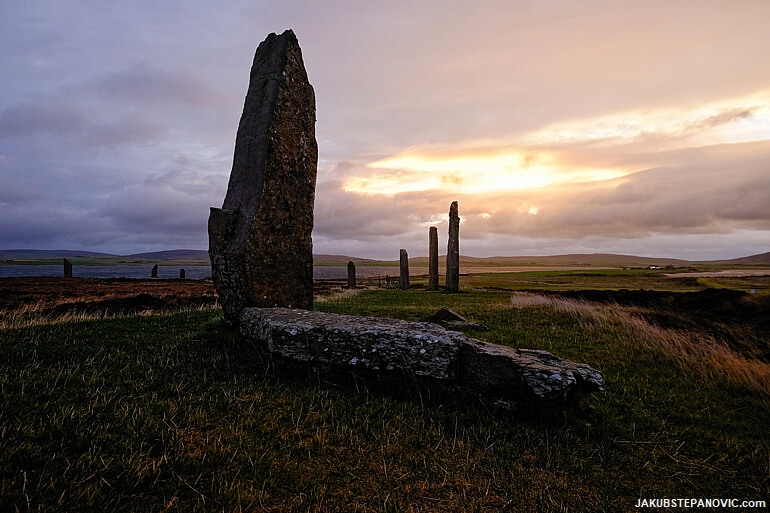
Early birds eat the worms; we had the whole site just to ourselves. And it was absolutely stunning. The place is situated between two lochs and feels special at any angle.
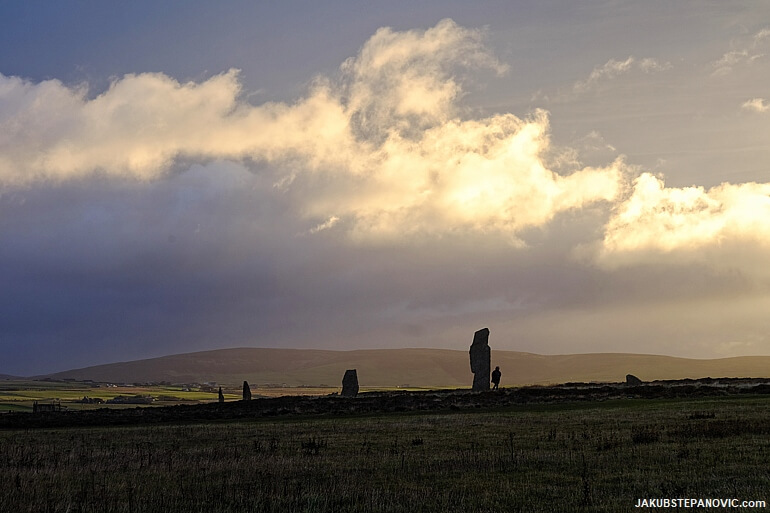
And the sunrise, oh!
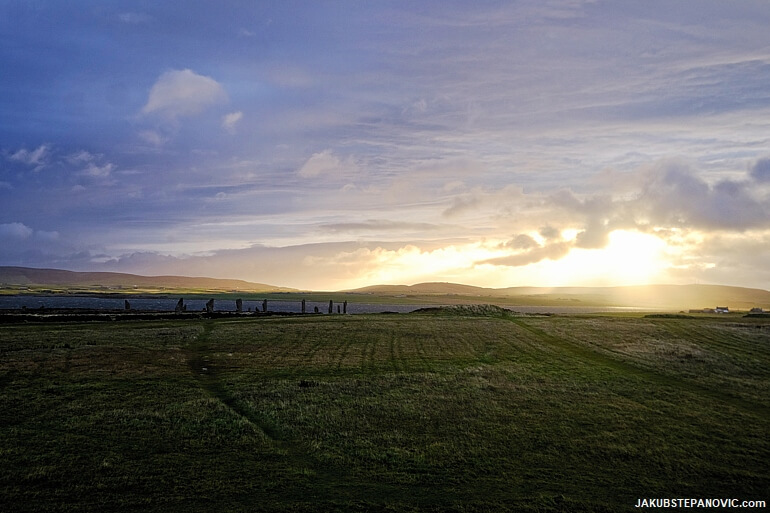
The wind was steady, blowing strong. But being prepared with plenty of layers, this was fun and it added atmosphere: one could perform that famous Matrix scene when Neo leans back to dodge bullets — the wind prevented one from falling on their butt.
After some two hours of enjoying the site, we moved on. We still had some time before we had to get on a ferry back to the Scottish mainland; thus, we went to see the Orkney's western coastline. On the way, it started raining, and the closer we were to the shores; the further the wind strengthened.

Once I pulled over near remains of an anti-aircraft battery from the Second World War near the coastal cliffs Yesnaby, the water on the windshield was moving in 90 degrees. Gravity was no longer in the game; it was raining sideways.
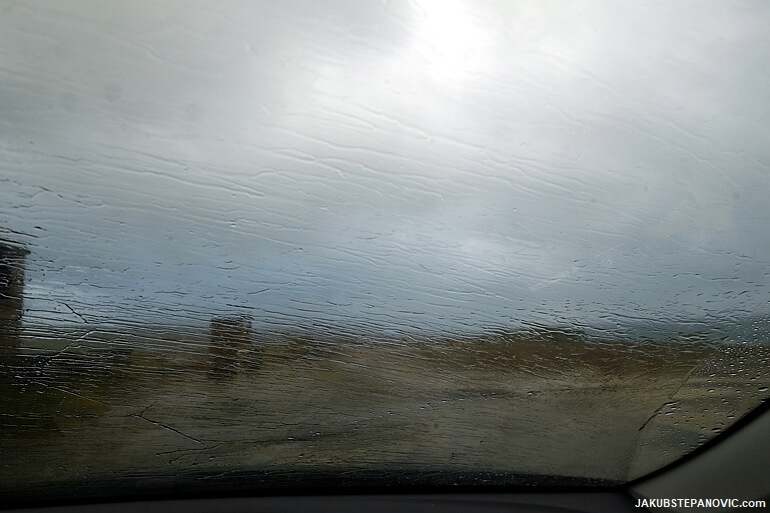
note the drops. The wind was from the right.
Looking at all that made me thankful for all the technology we have available in this day and age, as one can just sit in comfort and travel from place to place. The car was tempting to stay inside — but it wouldn't be me. The cosiness of the car was indeed sweet, but the view was not. Knowing that some appealing cliffs should be nearby, I braced myself and entered the mayhem.
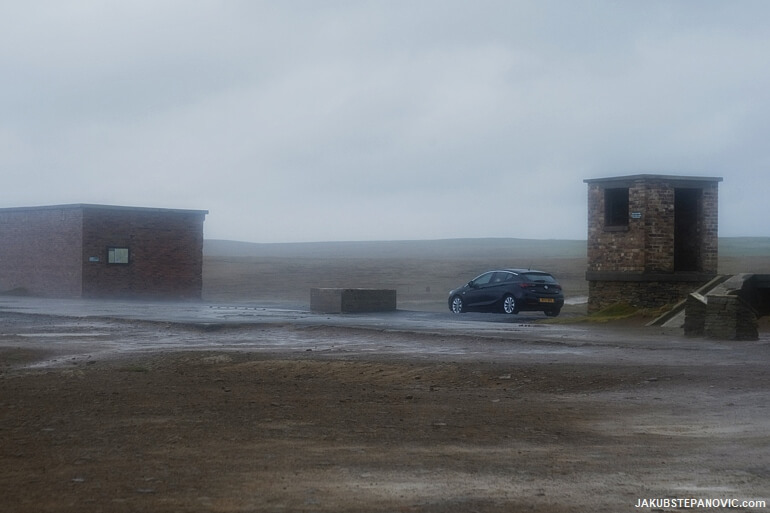
It was an experience. Nature clearly showed that the wind at the Ring of Brodgar I thought to be strong, was just a fragment of its full potential. Pffff! The wind made it challenging to walk in a straight line, so I kept a distance from the cliffs' edge. But I got a view of what's happening underneath — the cliffs were crushed by immense waves coming from the ocean with brutal strength. I tried to take a picture of it, but in a second, my lens was caked with a mixture of rain and drifted water from the ocean. "Aye, this place won't give things for free," I thought. At the same time, I was lured to explore more of the coastline, as landscapes like this are something one won't see every day!
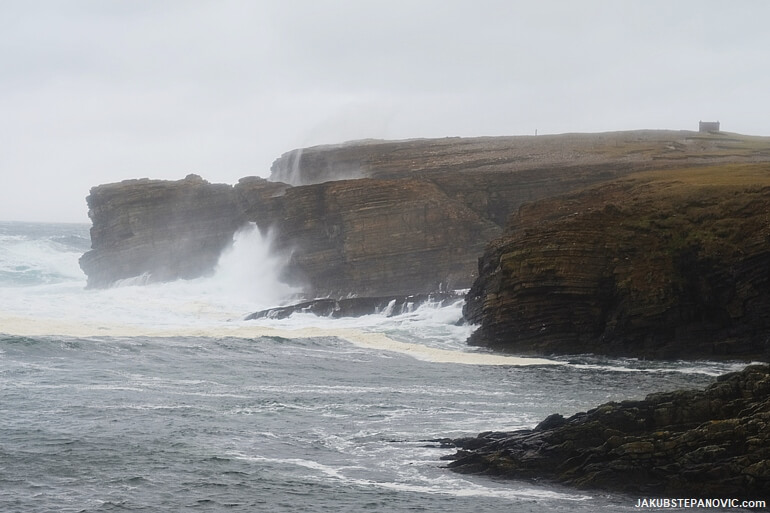
For reference, these cliffs are some 40m /130ft tall.
I went further to see what does this place has in store. And what a good call it was!
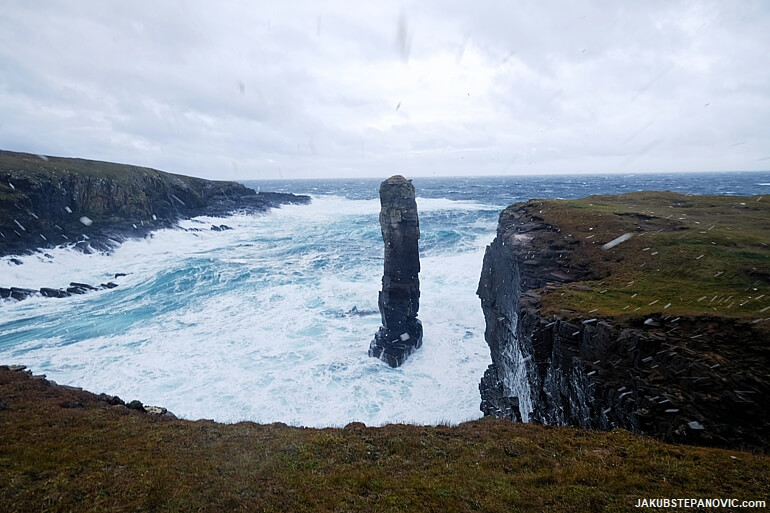
getting swamped, for a good cause.
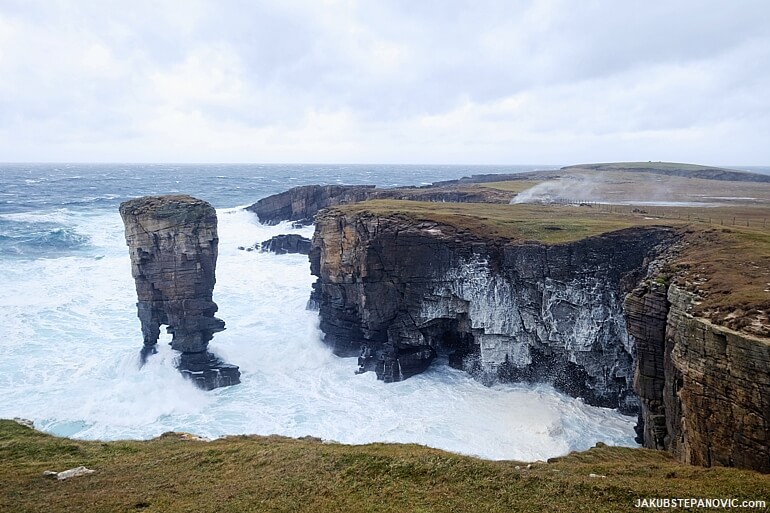
How cool is that!
Once back in the car, I got rid of my drenched jacket and set off to Stromness, to catch a ferry to the mainland. On the way, we learned that the salt from that ocean water isn't really helpful when it comes to windows. Again, I was thankful for whoever came up with the idea of windshield fluid.
In Stromness, we ate brunch and boarded the ferry. It was much bigger than the one we used on the way here; there were multiple storeys with lounges, bars, and even a gambling area. The harbour is situated on the east side of the land, and is shielded from the wind coming from the west. It gave an impression that the wind chapter is over, but nope. Once on the open sea, our ship started rocking from side to side like a toy. I don't think I ever experienced something similar. Inside, you could hear squeaking and cracking noises of the stressed material around, and soon the air got scented by people who couldn't hold their breakfast where it belonged. So we spent most of the journey on an outer platform instead, optimistically named "the sun deck." Well, that was fun. See yourself:

Allow gif to load.
Who needs rollercoasters, when you can have the Scottish seas? ...And this was a big, heavy vessel — I couldn't imagine how it would be on some smaller ones. How the heck they did this centuries ago, on those wooden boats?
The waves weren't the only thing to be amazed by, as the route passes a 137m / 449-foot tall sea stack, the Old Man of Hoy.
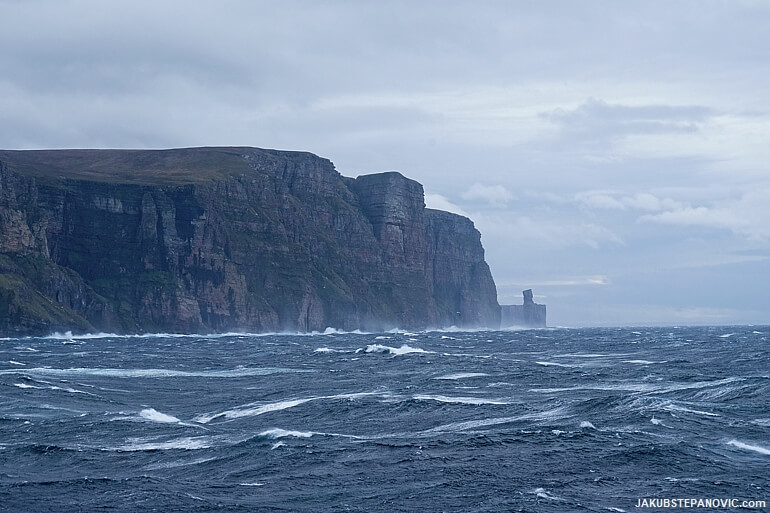
Before we safely landed, I spoke with one member of staff, and she said that these conditions are only 5-6 times per year. Interesting, it was.
We left the ferry turning to the west, on a winding road along the mainland's north.

There are many points of interest in this area, but as the rain beefed up and also we didn't want to be in a rush for the next ferry, we passed most of them. But when it's raining, and you know there's a charming cave nearby where you could hide; well, that can't be missed..
The cave is named Smoo, which came from Norse, and means "a cave." It was used as a fishing base for ages; there are speculations that the first settlement here was 5000BC. Smoo has a large entrance, but you can actually get further in by a wooden walk, where's a roaring waterfall. I did not expect this, and it was excellent!
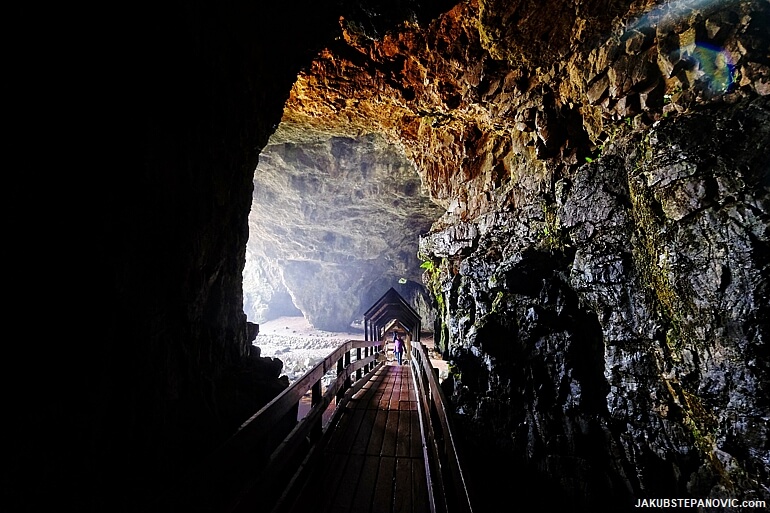
Snack-time, and back to the road. Now, let me tell you more about the road itself. It is a part of the North Coast 500, which is a driving icon. It is no secret, I enjoy driving nice roads, and I like the path to be a goal itself. I actually have a list of routes I'd love to drive on, and the NC500 was among the top of it. And here's me, living the dream.
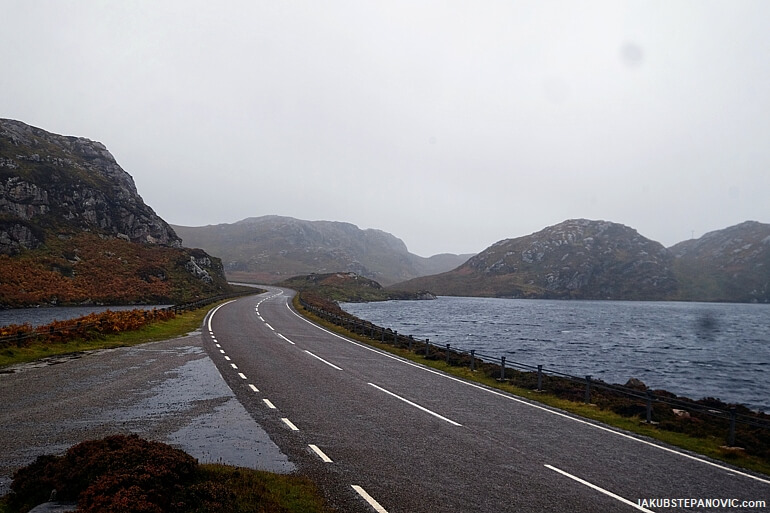
Wooo, yes please. The traffic was next to none, and if there was someone, they were in sportscars. Many come here only to drive the road, without stopping anywhere. It is that good.
We made another stop near the Ardvreck Castle, another good one.
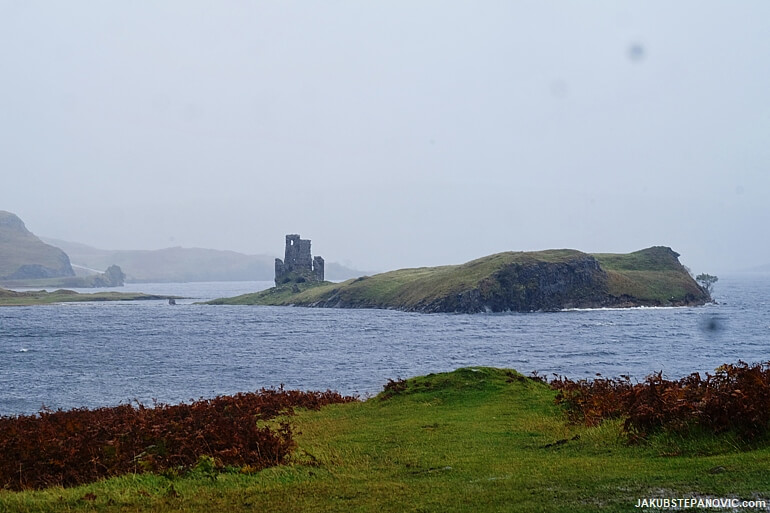
From here, we got to Ullapool, a town that facilitates a ferry link to the islands of Lewis and Harris. Once we got there, we had supper. Sleep early, wake up early, the following day we kicked off with another set of standing stones dating from the Neolithic period:

The Callanish Stones.
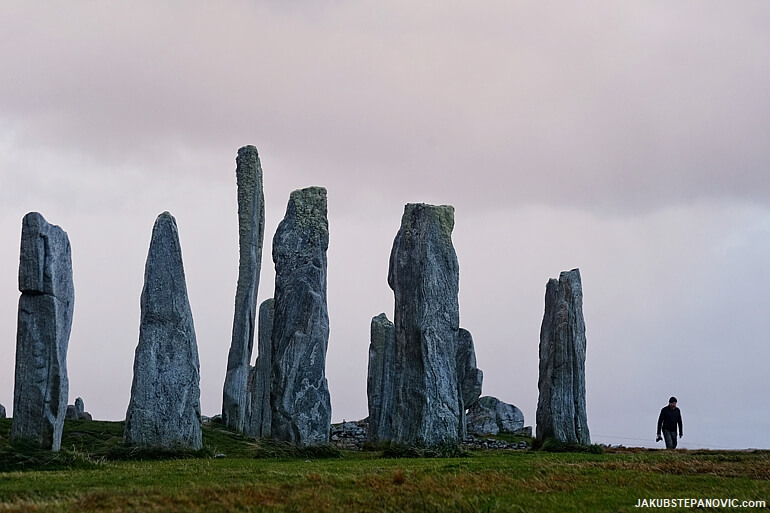
It was ideal. There were multiple storms circling around, but the site itself was dry.
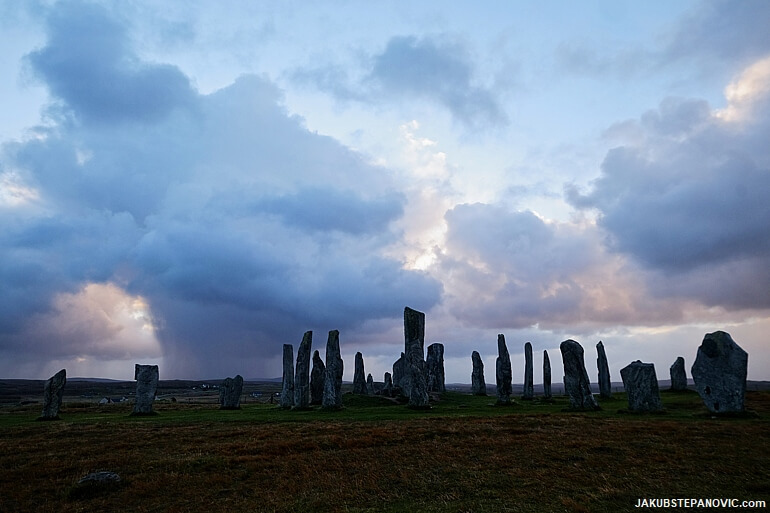
What a place. After being lucky to see some menhirs and dolmens in western France and England, the sites in Scotland are my favorite. The stones are impressive, set in enchanting landscapes, and with hardly anyone there. Oh, and accessible free of charge, too. A big contrast to Stonehenge, which is expensive, overcrowded and with rude security guards.
Having such fun exploring the stones, we decided to see more. On a smaller island nearby, Bernera, is another set of them.
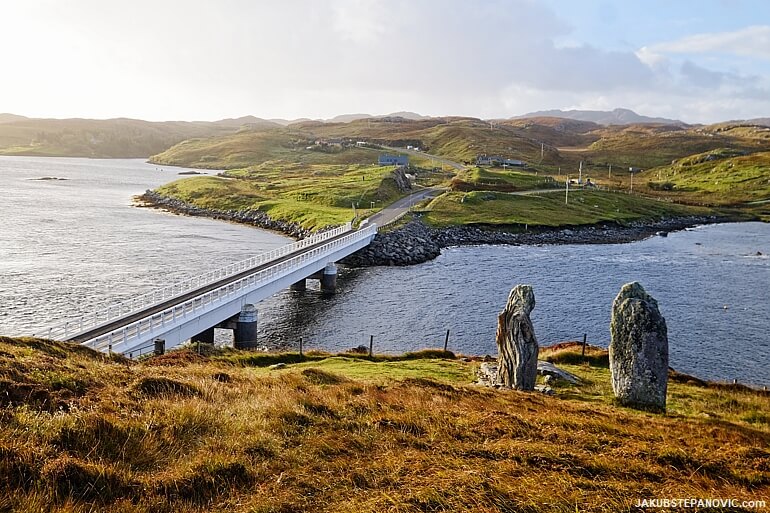
Smaller, still cool. What's interesting, the stones here are different from those used for the Ring of Brodgar. The ones on Lewis and Harris have more prominent structure, and the rock seems to be more weathered. They look incredible.

We had breakfast here, while we enjoyed the place, sunshine and everything.
Later we opted to hike up the Loch Scourst. Conveniently, on the way is the Bunavoneader Whaling Station, another point of interest I have wanted to see for a long time. Even there's not much left, it is reportedly the most preserved whaling base in the northern hemisphere.

One thing that still stands strong is its over 100 years old smokestack.
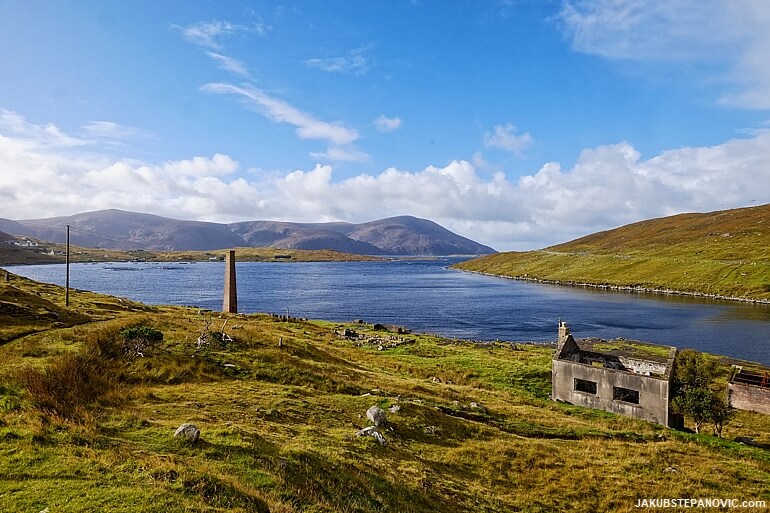
Having an interest in such industrial sites, I went to get a closer look at it. I also got another fresh shower as a bonus. The weather here changes sharply, and it adds glamour to the location.
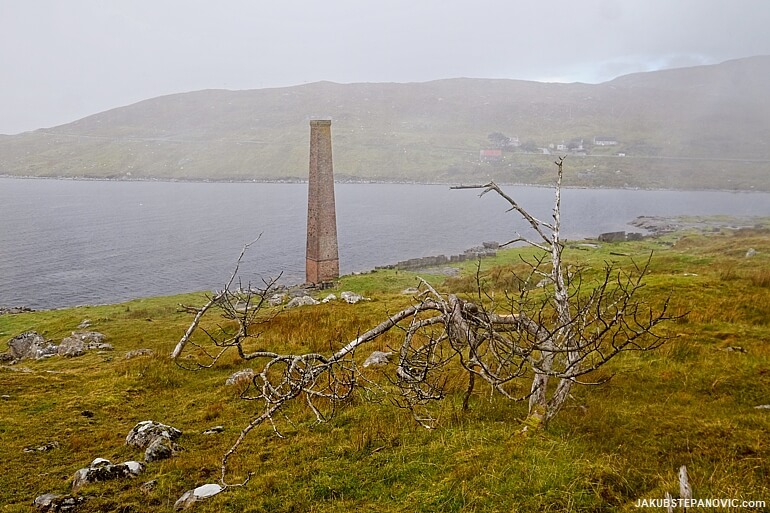
By the time we went up the loch, the weather was different again.

At the loch is an eagle observatory, and at the time, there was also a boat, which offered a calm and scenic way to relax ashore.
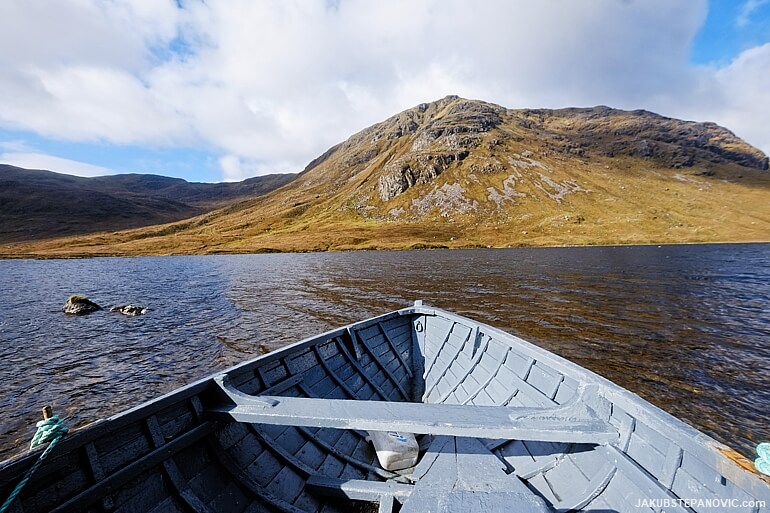
More fun roads took us to Tarbert, where we stopped for food and got on a ferry to Skye.
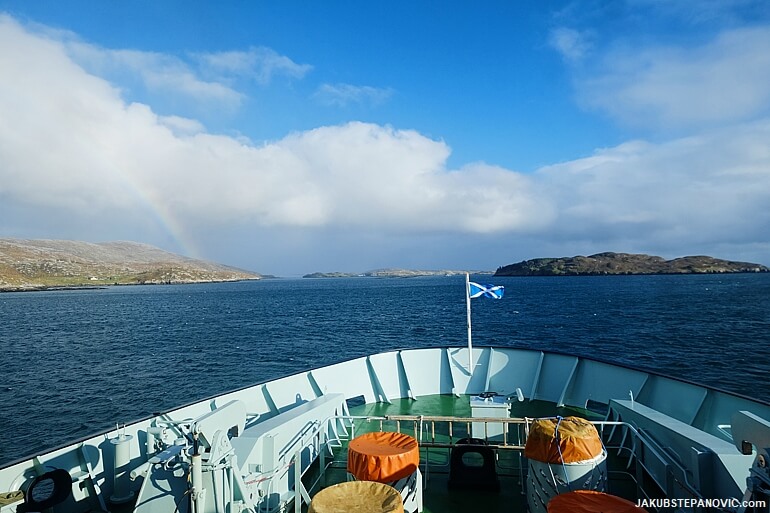
On the Isle of Skye, yet another lovely road let us on the island's western coast..
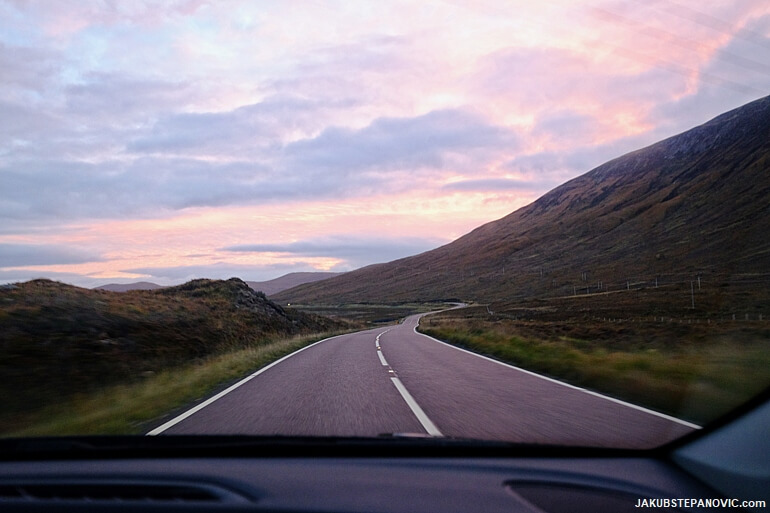
Where we had an evening walk around the Fiskavaig Bay, and good sleep in a local hostel.
The next morning we went on a nice hike near the Cuillin mountains.
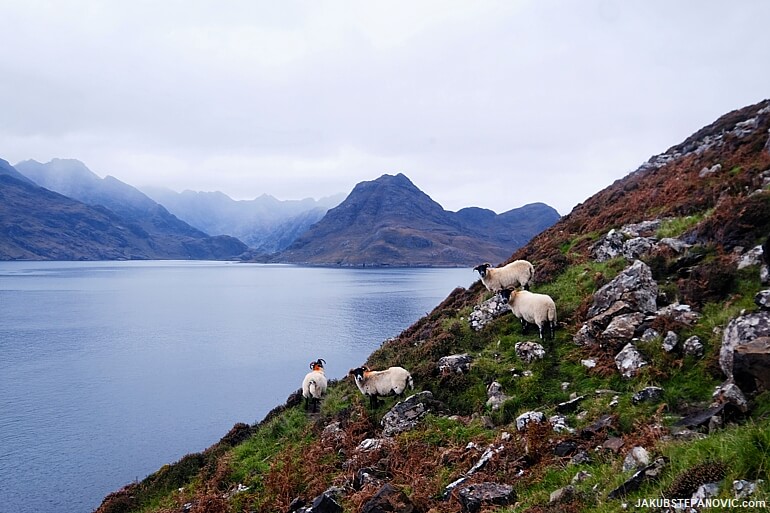
...and started our journey back home.
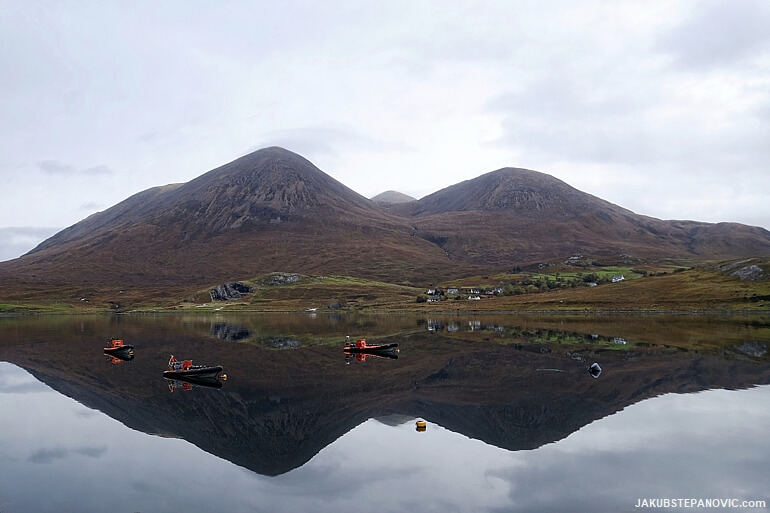
Before returning to the Inverness, we drove past Loch Ness and the Falls of Foyers.
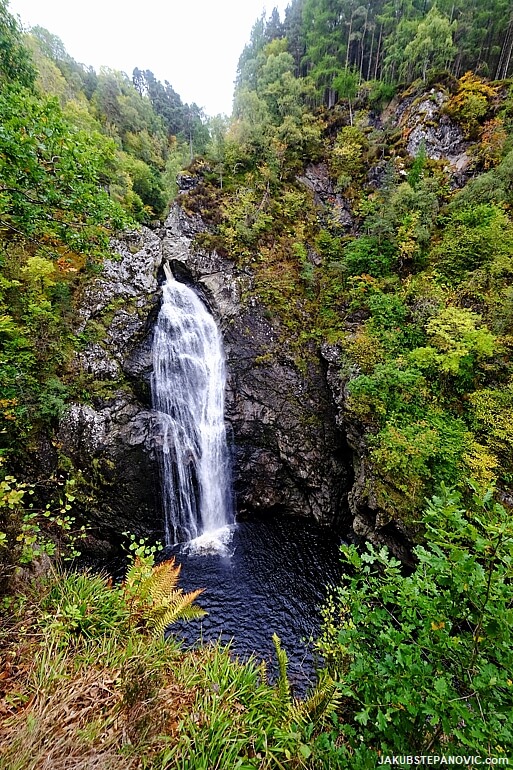
Then, the traffic of the A9 back to Perth was the smoothest I had ever experienced there, so we got back to Dundee in a swift fashion.
Once again, highlands proved themselves as a place that never disappoints.
If you liked this article, you might also like my other longer stories, previous road trips, or more of Scotland's adventures, such as:
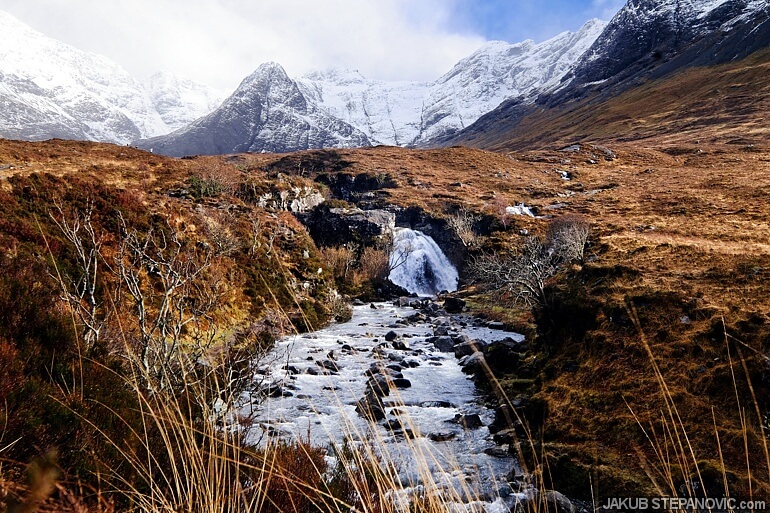
|
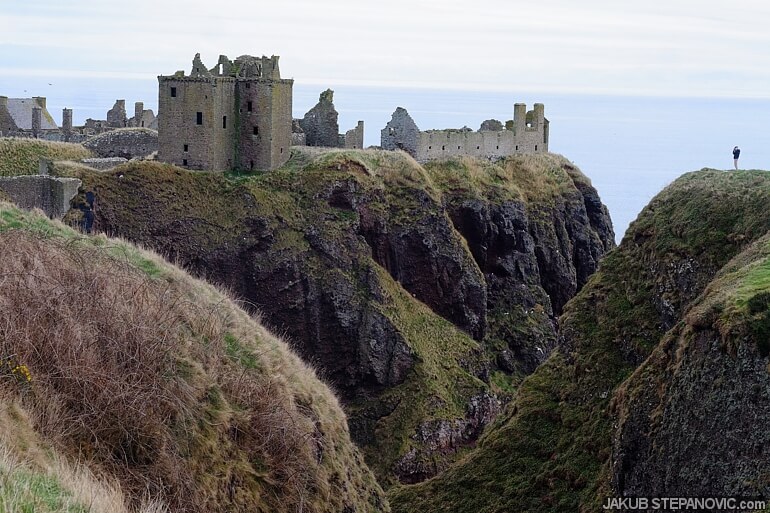
|
Thanks for reading!
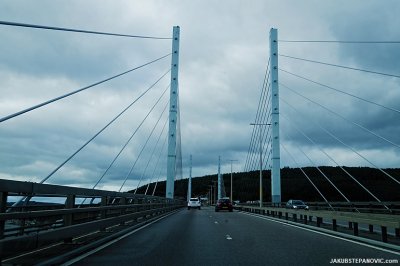
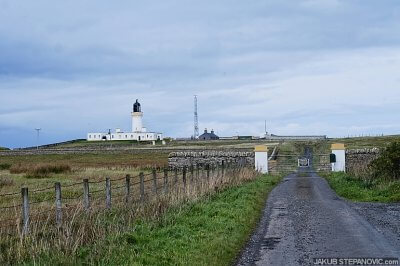
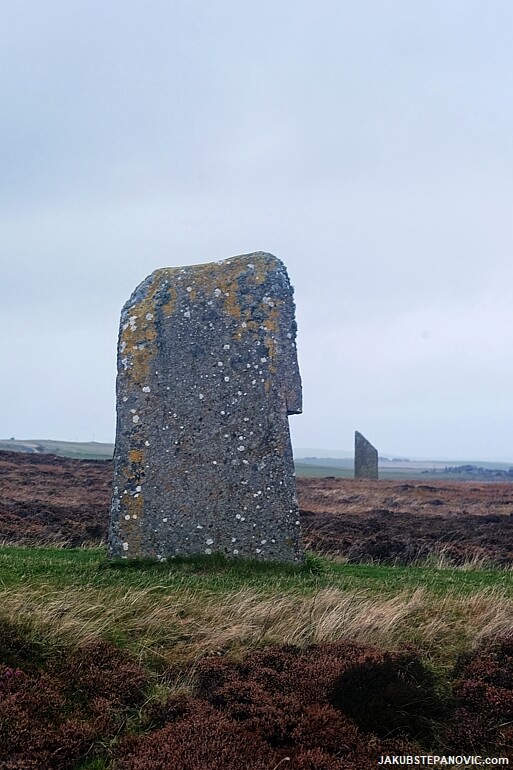


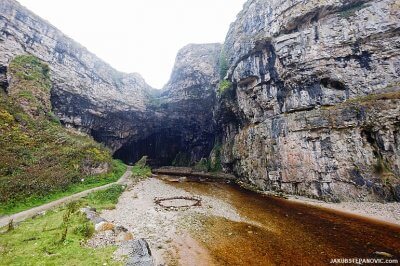
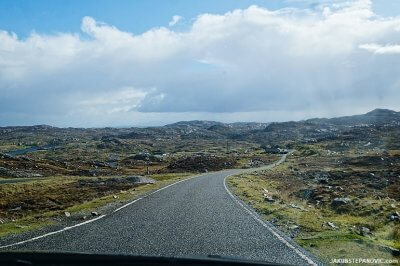
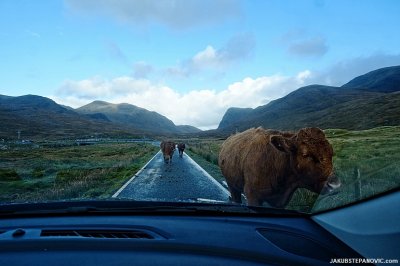
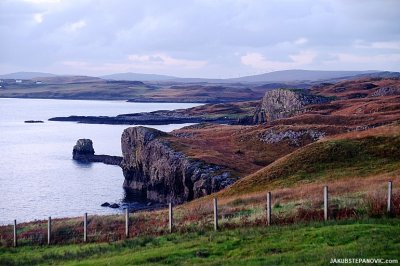

Comments are closed.